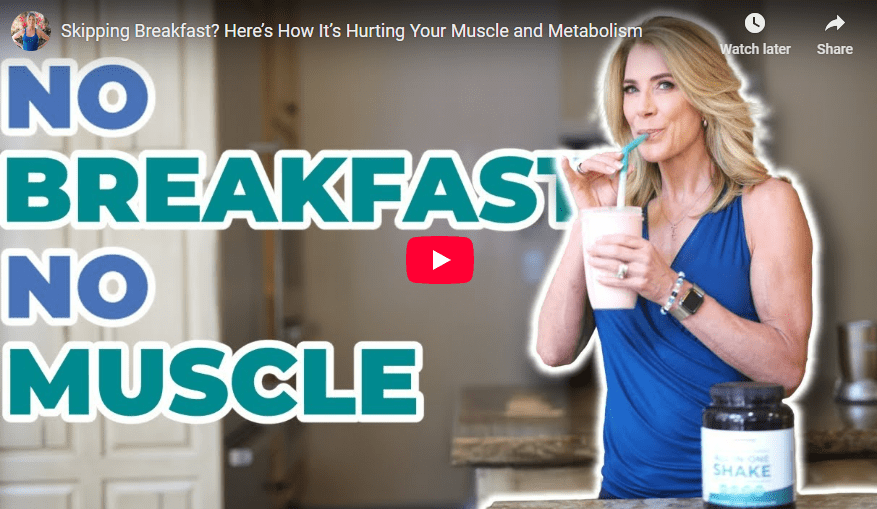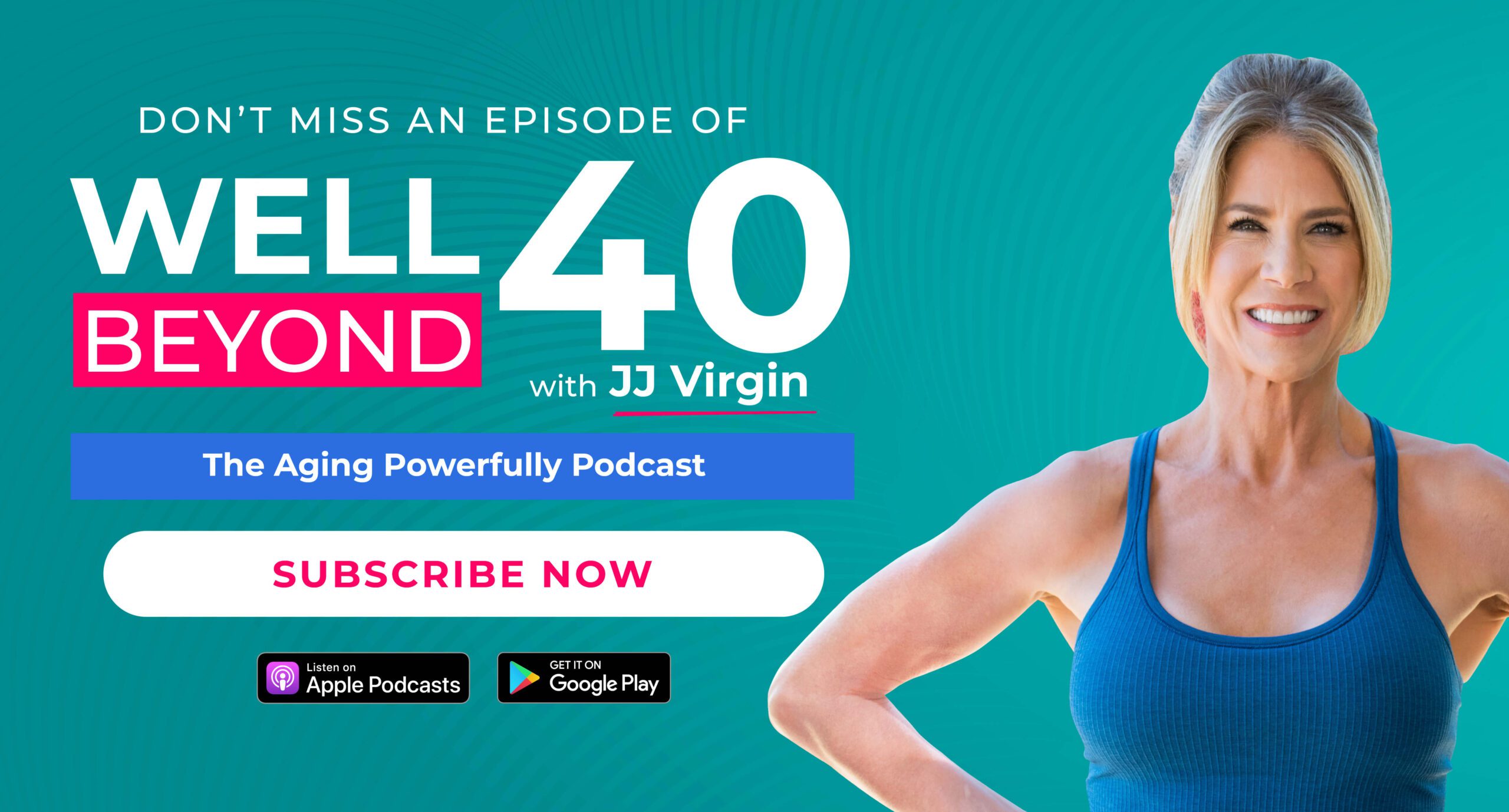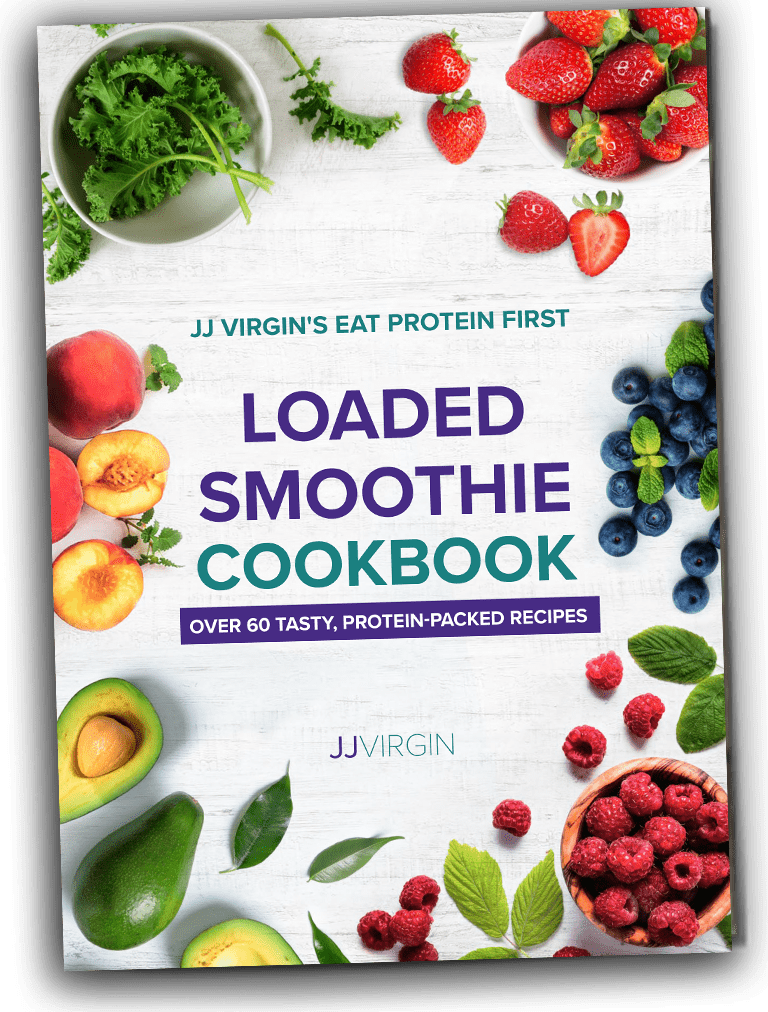Optimal amounts of protein at every meal help you hit your health goals, whether they include building muscle, managing your weight, boosting metabolism, aging powerfully, or (if you’re really aiming high) all of the above.
How Protein Works in the Body
When you eat protein like a grass-fed steak or wild-caught salmon, your body breaks down that protein into 20 amino acids, which slow digestion and signal your brain that you’re full. Nine of these amino acids are considered essential because your body can’t make them, you need to get them from food or supplements.
Your body can make the other 11 amino acids from other nutrients; hence they are deemed non-essential. Despite their names, essential and non-essential amino acids are equally important for optimal health.
In certain circumstances, your body may not be able to produce non-essential amino acids in sufficient quantities. As a result, non-essential amino acids become conditionally essential. In those conditions, you need to get them from food or supplements (just like you would essential amino acids).
Consider L-glutamine, the most abundant amino acid in your body. This non-essential amino acid provides a source of energy for your immune system and gut, whose cells need to rapidly divide and proliferate. Studies show that L-glutamine can support gut barrier integrity, reducing your risk of conditions like leaky gut.1
Normally, your body can synthesize L-glutamine from other amino acids. However, under specific situations—things like intense exercise, injury, or illness—your body’s demand exceeds how much glutamine your body can make. Under those circumstances, glutamine becomes a conditionally essential amino acid.2
The Benefits of Getting Complete Protein
Foods that provide all nine essential amino acids are called complete proteins. When you eat complete protein and get those essential amino acids, your body can fulfill numerous functions, including:
- Protein synthesis: Amino acids help build new proteins, which then support tissue repair, enzyme production, organ and muscle health, and more.
- Muscle growth and maintenance: Muscle demands optimal amino acids to repair and rebuild itself after exercise or injury.
- Hormone regulation: Amino acids help produce insulin, growth hormone, thyroid hormones, and other hormones that contribute to metabolism, growth, development, and overall hormonal balance.
- Immune function: Amino acids help produce antibodies and immune cells that defend the body against infections and diseases. They also help repair and regenerate immune tissues.
- Building neurotransmitters: Tryptophan, tyrosine, and phenylalanine and other amino acids help build neurotransmitters like serotonin, dopamine, and norepinephrine, which are essential for mood regulation, cognitive function, and overall mental well-being.
An incomplete protein, on the other hand, is low or deficient in one or more essential amino acids. Most plant-based protein sources, including legumes, nuts, and seeds, are considered incomplete proteins (though they are still nutritious in other areas).
The good news is that you don’t need to combine plant-based proteins to get complete protein.
The Myth of Protein Combining
You may have heard about the concept of protein combining, which originated in the 1970s.
Proponents argued that because plant-based proteins lack one or more essential amino acids, vegans and vegetarians needed to combine foods in specific ways at each meal to form complete proteins, like putting together puzzle pieces.
The belief was that by combining different plant-based foods that had complementary amino acids, like beans and rice, you could create a “complete protein” similar to what you get from meat. Frances Moore Lappé discussed this idea in her book Diet for a Small Planet.
However, Lappé later revised her position, saying that combining proteins at each meal wasn’t necessary. Other organizations, including the American Dietetic Association and the World Health Organization (WHO), also debunked this myth.
Why Protein Combining Is Unnecessary
Why the reversal? Because newer research and advances in human nutrition helped scientists better understand that the body has a remarkable ability to store and utilize amino acids from different foods you eat throughout the day. So even if one meal doesn’t have all the essential amino acids, your body can use the stored amino acids from previous meals.
If you eat a balanced diet that includes a mix of different plant-based foods like grains, beans, vegetables, nuts, and seeds, you will naturally get all the essential amino acids your body needs over time. You don’t have to worry about combining specific foods in one meal.
Of course, animal protein will always be an easier, more effective way of getting complete protein, but a variety of foods allows vegans and vegetarians to meet their quota, too.
Every serving of Amino Power Powder provides all 9 essential amino acids, the conditionally essential amino acid L-arginine, alpha-ketoglutarate, and vitamin B6 (as pyridoxal-5-phosphate) for optimal absorption and availability. This free-form amino-acid powder absorbs quickly, to get all the benefits of amino acids.* The delicious fruit punch flavor, sweetened with stevia with zero sugar, mixes easily into your favorite liquid.
The Best Complete Protein Sources
When it comes to getting excellent amounts of complete protein, animal foods are far superior to plant foods. (Don’t shoot the messenger!) This is because animal foods provide the nine essential amino acids.
Most plant-based foods, on the other hand, often don’t provide all the essential amino acids. Legumes tend to be low in the essential amino acid methionine, while nuts can lack lysine or tryptophan. Two plant-based exceptions are quinoa and chia seeds, which do provide all nine essential amino acids.
With that in mind, my favorite complete proteins include:
1. Meat
Poultry (including chicken and turkey), beef, pork, and lamb are all complete proteins. They provide a wide range of essential amino acids as well as vitamins and minerals. Quality matters: always buy organic pasture-raised poultry as well as grass-fed/ grass-finished beef and other red meats.
Try these recipes:
- Grass-Fed Beef Tenderloin Steaks with Sauteed Shiitakes
- 15-Minute Chicken & Quinoa Macro Bowls
- Grilled Dijon-Lemon Lamb Kabobs
2. Seafood
Wild-caught fish (skip the farm-raised varieties) including salmon, tuna, trout, and sardines are complete proteins that also provide anti-inflammatory omega-3 fatty acids.
My favorite seafood comes from Vital Choice®. They deliver the highest-quality wild-caught fish directly to my door. You’ll find seafood and so much more (including grass-fed beef!) here.
Try these recipes:
3. Pasture-Raised Eggs
Eggs are an amazing, inexpensive complete protein source, unless you’re intolerant. As with other animal proteins, quality matters. You are what you eat ate. If those chickens ate poor-quality feed, you’re ingesting that in your eggs.
Try these recipes:
A Protein-First Approach to Eating
If you’ve been following me lately, you know that optimal protein proves super critical for muscle growth and repair, immune function, hormone synthesis, and so much more.
Ensuring that you’re getting sufficient protein allows your body the amino acids it demands to balance blood sugar, stay lean, keep your metabolism working well, and maintain steady energy and focus.
Animal protein will always be your best bet to get ideal amounts of complete protein. You can meet your quota with plant foods to get complete protein, but it’s much harder.
Combine protein with weight-resistance training and you’ve got a solid one-two combo to feel great, maintain a healthy weight, age powerfully, and show up amazingly in everything you do.
Ready to get all the benefits of protein, including fat loss and strong muscle? Head over to my 7-Day Eat Protein First Challenge. I’ll show you how to tame your sweet tooth, feel more satisfied between your meals, kickstart the process of building muscle and burning fat, and finally have the energy to do all the things that make life so fulfilling.
References:
- Whitten, Ari; Leaf M.S., Alex. Eat for Energy (p. 205). Hay House. Kindle Edition.
- Lacey JM, Wilmore DW. Is glutamine a conditionally essential amino acid? Nutr Rev. 1990 Aug;48(8):297-309. doi: 10.1111/j.1753-4887.1990.tb02967.x. PMID: 2080048.
*These statements have not been evaluated by the Food & Drug Administration. Products mentioned are not intended to diagnose, treat, cure, or prevent any disease. The views in this blog by JJ Virgin should never be used as a substitute for professional medical advice. Please work with a healthcare practitioner concerning any medical problem or concern.





